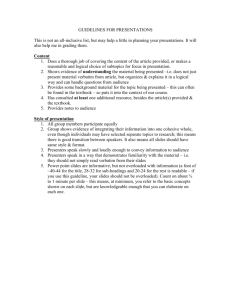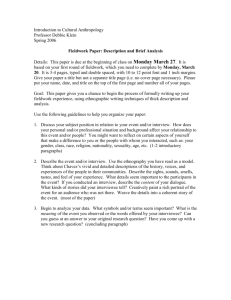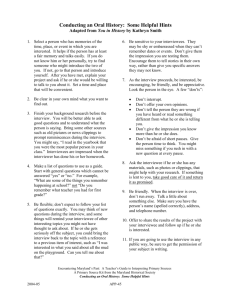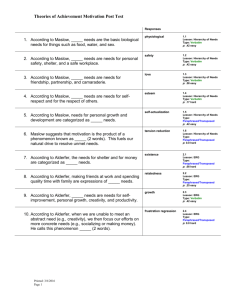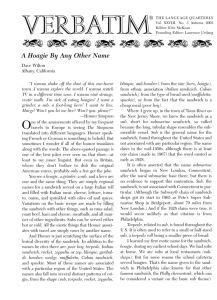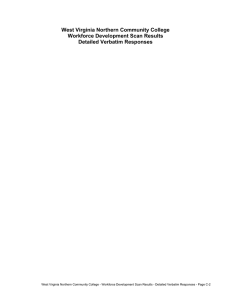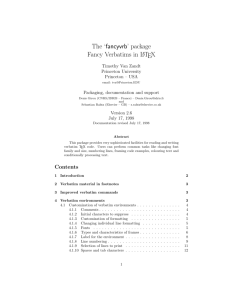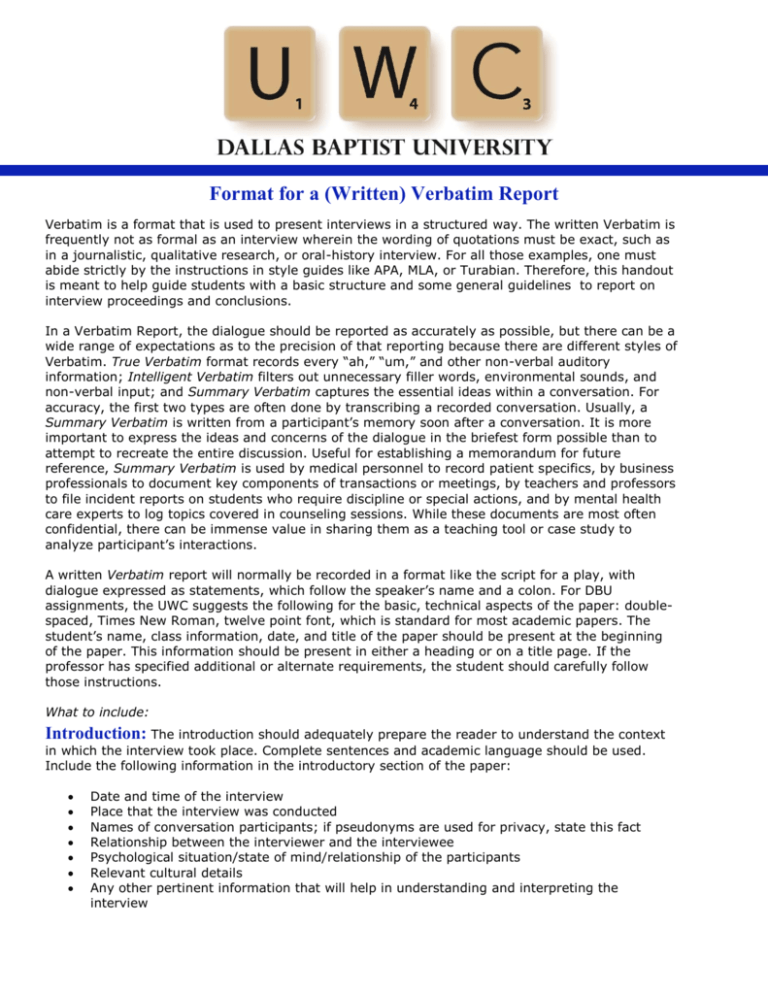
Format for a (Written) Verbatim Report
Verbatim is a format that is used to present interviews in a structured way. The written Verbatim is
frequently not as formal as an interview wherein the wording of quotations must be exact, such as
in a journalistic, qualitative research, or oral-history interview. For all those examples, one must
abide strictly by the instructions in style guides like APA, MLA, or Turabian. Therefore, this handout
is meant to help guide students with a basic structure and some general guidelines to report on
interview proceedings and conclusions.
In a Verbatim Report, the dialogue should be reported as accurately as possible, but there can be a
wide range of expectations as to the precision of that reporting because there are different styles of
Verbatim. True Verbatim format records every “ah,” “um,” and other non-verbal auditory
information; Intelligent Verbatim filters out unnecessary filler words, environmental sounds, and
non-verbal input; and Summary Verbatim captures the essential ideas within a conversation. For
accuracy, the first two types are often done by transcribing a recorded conversation. Usually, a
Summary Verbatim is written from a participant’s memory soon after a conversation. It is more
important to express the ideas and concerns of the dialogue in the briefest form possible than to
attempt to recreate the entire discussion. Useful for establishing a memorandum for future
reference, Summary Verbatim is used by medical personnel to record patient specifics, by business
professionals to document key components of transactions or meetings, by teachers and professors
to file incident reports on students who require discipline or special actions, and by mental health
care experts to log topics covered in counseling sessions. While these documents are most often
confidential, there can be immense value in sharing them as a teaching tool or case study to
analyze participant’s interactions.
A written Verbatim report will normally be recorded in a format like the script for a play, with
dialogue expressed as statements, which follow the speaker’s name and a colon. For DBU
assignments, the UWC suggests the following for the basic, technical aspects of the paper: doublespaced, Times New Roman, twelve point font, which is standard for most academic papers. The
student’s name, class information, date, and title of the paper should be present at the beginning
of the paper. This information should be present in either a heading or on a title page. If the
professor has specified additional or alternate requirements, the student should carefully follow
those instructions.
What to include:
Introduction: The introduction should adequately prepare the reader to understand the context
in which the interview took place. Complete sentences and academic language should be used.
Include the following information in the introductory section of the paper:
Date and time of the interview
Place that the interview was conducted
Names of conversation participants; if pseudonyms are used for privacy, state this fact
Relationship between the interviewer and the interviewee
Psychological situation/state of mind/relationship of the participants
Relevant cultural details
Any other pertinent information that will help in understanding and interpreting the
interview
The Interview: The dialogue should be reported as precisely as possible. Each statement should
be preceded by the appropriate person’s name or pseudonym in bold, followed by a colon. Each
time the speaker changes, the label should match. Quotation marks are not necessary in this
layout, since it is clear that the material presented is directly or nearly quoted. Refer to the
following example:
Ima: Hi! Love this weather.
Youra: Perfectly adequate. I love hamsters today! Thought I might take mine for a walk.
Ima: Do you use a leash?
Youra: Of course not! We like using a stroller.
Ima: What an idea! Did you invent a special stroller to keep him inside?
Youra: Nah. I did not invent ours; I bought it at Petsmart.
Conclusion/Reflections: The conclusion should sum up the interview/conversation and should
answer the following questions, when relevant:
How did the interviewee react?
Did the interviewee use any significant non-verbal actions?
Will the interviewee have more questions later? And, will the interviewer be able to followup?
If there are any other assignment-specific requirements or any further notes that need to be made,
include them in the conclusion. Consider possible applications for future interactions or principles to
apply to similar situations. Again, pay close attention to the professor’s instructions to see if he or
she has offered any additional guidelines or points of discussion.
Original material copyright © Dallas Baptist University. All rights reserved. Other copyrighted material included by permission or
authorization. Created by UWC Staff for Dallas Baptist University. http://www.dbu.edu/uwc. August 2015.

